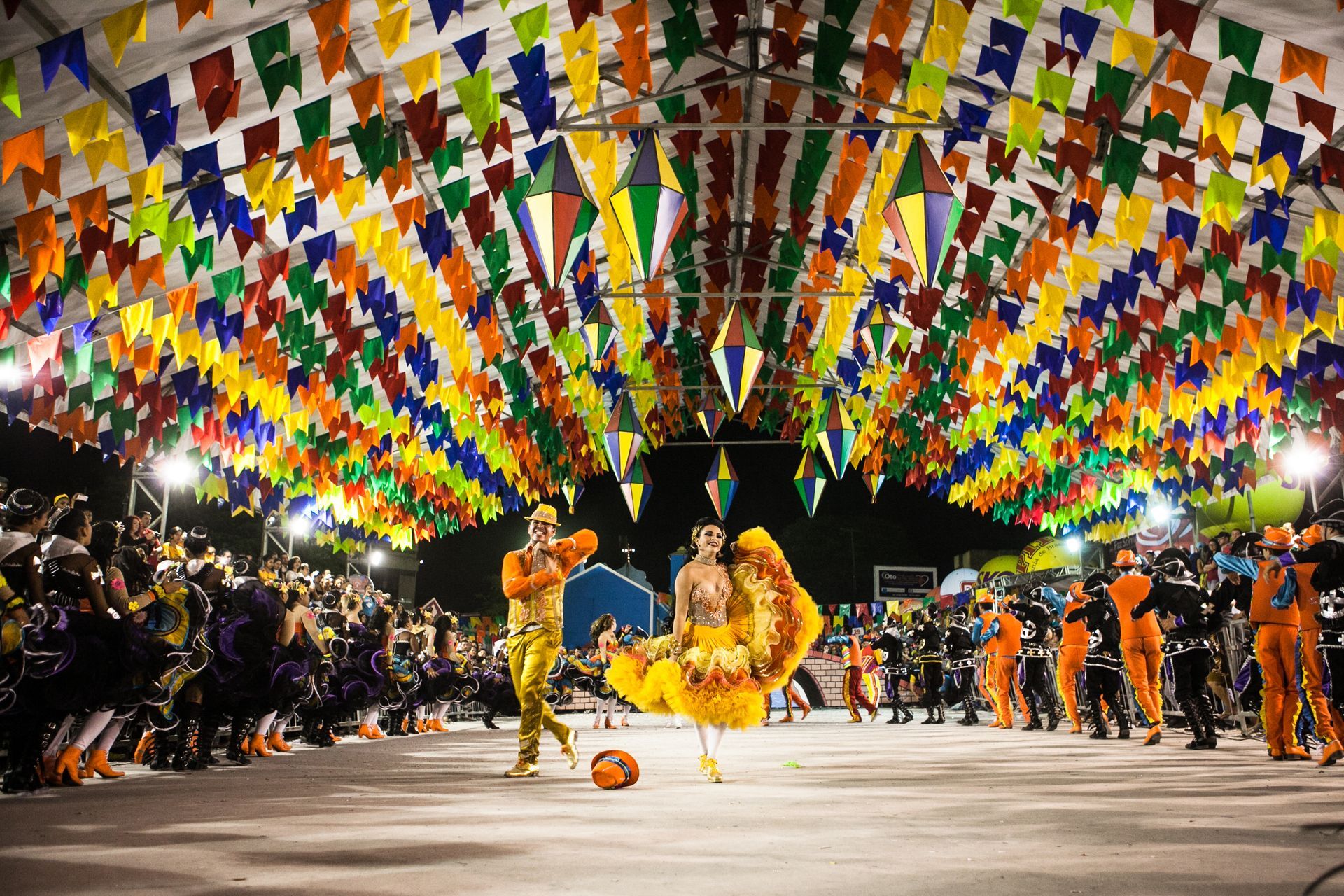Celebrating Festa Junina: a beloved Brazilian tradition
Festa Junina, also known as the June Festival, is one of Brazil's most cherished cultural celebrations. Rooted in European Midsummer traditions, this festivity was brought to Brazil by Portuguese settlers and has since evolved into a vibrant and distinctly Brazilian celebration. Taking place throughout the month of June, Festa Junina is marked by lively music, colorful costumes, traditional foods, and folk dances, and is loved by Brazilians across the country.
Festa Junina traces its origins to ancient pagan rituals celebrating the summer solstice in Europe. These rituals were later Christianized and became associated with the feast days of saints, particularly Saint Anthony (June 13), Saint John the Baptist (June 24), and Saint Peter (June 29). When Portuguese settlers arrived in Brazil, they brought these traditions with them, and over time they blended with indigenous and African customs to create the unique Festa Junina we know today.
One of the most recognizable aspects of Festa Junina is the traditional attire. Participants often dress in rural, rustic clothing reminiscent of Brazil's countryside. Men wear plaid shirts, straw hats, and patched pants, while women don colorful dresses adorned with ribbons and lace. This clothing pays homage to the country’s agricultural roots and adds a festive, nostalgic charm to the celebrations.
Music and Dance
Music and dance are at the heart of Festa Junina. The most popular dance is the quadrilha, a lively folk dance that mimics a traditional European square dance but with a Brazilian twist. Couples form lines and follow the instructions of a caller, performing a series of choreographed steps and patterns. The music typically features accordion, triangle, and zabumba (a type of drum), creating an upbeat and festive atmosphere.

Isaac Nobrega / PR
Traditional Foods
No Festa Junina is complete without indulging in traditional foods. The festival's cuisine reflects Brazil's diverse agricultural fare, with an emphasis on corn-based dishes. Some popular treats include:
- Pamonha: A sweet or savory corn paste wrapped in corn husks.
- Canjica: A sweet dish made from hominy corn cooked with milk, sugar, and cinnamon.
- Quentão: A warm drink made from cachaça (a Brazilian liquor), ginger, cinnamon, and cloves, often enjoyed on cool June evenings.
- Arroz doce: Sweet rice pudding flavored with cinnamon.
Bonfires and Fireworks
Bonfires are a central feature of Festa Junina, symbolizing the warmth and light of the summer solstice. Communities gather around large bonfires, singing and dancing late into the night. Fireworks also light up the sky, adding to the festive ambiance and delighting revelers of all ages.

Janine Moraes / Minc
Regional Variations
While Festa Junina is celebrated nationwide, each region of Brazil brings its own unique flavor to the festivities. In the Northeast, where the festival is particularly popular, celebrations are grand and elaborate, reflecting the strong cultural heritage of the region. In the South, the influence of European immigrants is more pronounced, with different folk dances and culinary traditions adding to the diversity of the festival.
At its core, Festa Junina is a celebration of community, heritage, and the joy of life. It brings people together to honor their cultural roots, share delicious food, and enjoy music and dance. Despite its ancient origins, the festival remains vibrant and relevant, continually evolving while preserving its traditional essence.
For Brazilians, Festa Junina is more than just a festival; it's a beloved tradition that evokes a sense of nostalgia and pride. Whether you're donning a straw hat, dancing the quadrilha, or savoring a piece of pamonha, Festa Junina is a time to celebrate the rich tapestry of Brazilian culture and the enduring spirit of its people.
Share this story:
Get the latest news straight into your inbox!
Contact Us
Read another story













